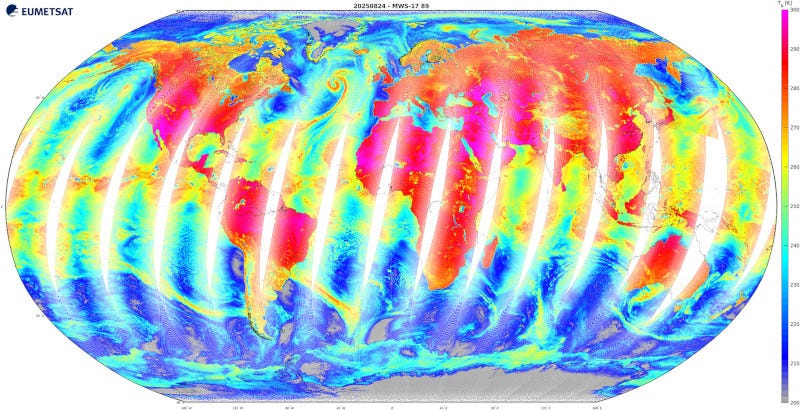First Data Gathered From New Radio Occultation Instrument
Beyond Gravity Technology Flying on New European Weather Satellite
The first weather data from a next generation radio occultation instrument developed by Beyond Gravity for a new European weather satellite shows how the technology enhances weather forecasting in the future.
"Our radio occultation instrument provides cross-sections of our atmosphere’s humidity and temperature around the globe."
Oliver Grassmann, Beyond Gravity
The first of a new generation of polar-orbiting European weather satellites was launched into space in mid-August. The satellite will measure humidity and temperature as well as aerosols and has now sent its first preliminary data.
“The new data from our ... radio occultation instrument will contribute to better weather forecasts in the future. Our radio occultation instrument provides cross-sections of our atmosphere’s humidity and temperature around the globe. This instrument is an important step within our payload and data strategy," said Oliver Grassmann, EVP of Satellites at Beyond Gravity. “This new European weather satellite, together with its five future satellites, will significantly enhance weather forecasting accuracy and climate change monitoring,” he said.
Beyond Gravity’s radio occultation instrument will fly on all six Metop Second Generation weather satellites. Radio occultation in space measures how radio signals from satellites bend as they pass through Earth’s atmosphere, helping understand weather, climate, and atmospheric conditions. “Our radio occultation sounder instrument will provide atmospheric temperature and humidity measurements that will be highly beneficial to weather predictions and climate monitoring. Our technology will enhance Europe’s weather forecasting capabilities for years to come with an extended number of soundings, and continuous global coverage," Grassmann said.
Beyond Gravity previously provided its radio occultation instrument for the first generation of Metop weather satellites. Chosen by Europe for radio occultation (RO) sounding the company’s instrument will provide RO data until 2050.
Europe’s weather-monitoring system is based on a dual-orbit strategy, with one satellite constellation in polar orbit and another satellite constellation in geostationary Earth orbit. Having satellites in both polar orbits and geostationary is key to accurate weather forecasting. The Metop weather satellites orbit Earth from pole to pole and at an altitude of 832 km (≈520 miles). They can provide data on global coverage every few days and make detailed observations. The other European weather satellites, the Meteosat satellites, hover much higher, at 36,000 km (≈22,370 miles) above the equator in geostationary orbit (GEO). From there those satellites can monitor rapidly evolving events (e.g. hurricanes) for now-casting and short-term weather prediction. However, being fixed above the equator means that some parts of Earth are never viewed.




